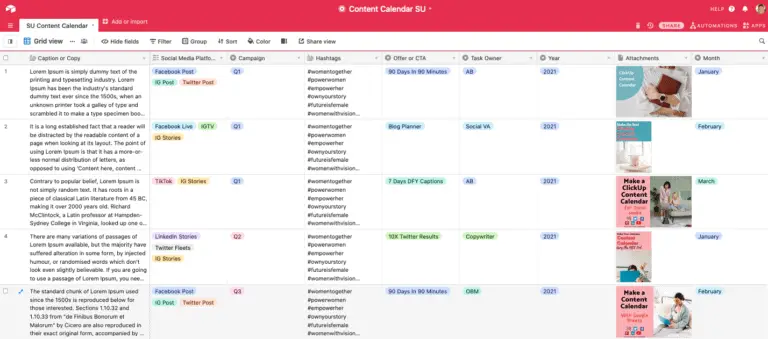

This allows us to review new writer applications, take inactive writers out of our pool, and see which articles each writer is assigned to.Įvery week, we review writer applications using our hiring rubric for technical writers and move those who meet our criteria to the “Accepted” status column. The “Kanban View” shows you all our writers (these aren’t our real writers, don’t worry) broken down by their status (e.g.: “Applied,” “Accepted,” “Rejected,” “Inactive”). Our Airtable calendar has a second table called “Writers” that stores profile information about each writer we work with. While you might not need this view, it gives you a sense of what’s possible with custom views in Airtable so you can create your own. Every month when we run payroll, we use this view to see which writers have written articles and how much they are to be paid.Īfter each writer has been paid, we add the pay date to the last column so we have a paper trail of the payment. When we find a writer, we type their name into the “Writer” field to match them to the article and move the article to the “Writing” column.Īnother helpful view we’ve built helps us see which writers need to be paid. Here’s our piece on matching writers with articles if you want to know more.Įvery week, we look through the articles here and reach out to any writers who might be a good fit for any of the available pieces. In our case, we built a custom view that shows all the articles that currently need a writer. Airtable lets you create new views to serve a specific purpose. Sometimes, having all the articles in a single view is overwhelming. Here’s what the whole “AirtableKanban View” looks like:īecause Airtable keeps track of when articles move from one stage to another, we can look back and see where things are getting stuck in our process and how they change over time. Promoted - At this point, the article is completely finished…until we decide to do a refresh.This column holds articles that have been published but not yet promoted. Published - We don’t promote content directly for our clients, but you should be.Scheduled - Very few clients publish content the moment we hand it over to them, so each assignment enters the Airtable Scheduling stage until it goes live.Typically, this involves some sub-steps (technical review, copy editing, revisions, etc.), but by the end, we should have a complete piece of content that’s ready to publish. Editing - After a writer submits their first draft, the article enters editing.Writing - Once the writer is confirmed and starts working on the assignment, we move it to this column.Ready - At this stage, the assignment is defined, it has a due date, and we’re deciding who will write it.We typically want to have a complete brief (see Part 1 above) before moving an assignment out of this column. Preparing - Ideas and loose pitches that still need to be defined go here.We typically use the following stages for each piece of content: Our Airtable“Kanban View” in the “Assignments” table helps you see exactly where each article is in the publishing process. We can also drag assignments around to move their due dates or rearrange them based on extenuating circumstances. Just navigate to the Airtable “Calendar View” in our “Assignments” table to see when articles will be published.īy color-coding each assignment, we can see which ones are on track and which ones might need extra attention to make sure they hit their due date. I wouldn’t recommend this approach, but the primary goal of a publishing calendar is just that. If you’re old-school and keep track of your calendar draft on a wall calendar at your office, you’ll probably just pencil in the names of each article on the date you plan to release them. Here are the key pieces to our Airtable schedule template: 1. Our Airtable calendar goes even further by allowing us to manage assignments, writer payments, and writer applications.ĬOPY OUR AIRTABLE EDITORIAL CALENDAR TEMPLATE HERE It lays out all the articles your team is working on along with their current status. What is an Airtable Editorial Calendar?Īn “editorial calendar,” “publishing calendar” or “content tracker” is the backbone of a robust content management process. In this post, I’ll show you the elements of our publishing calendar and give you access to a template of the publishing calendar we use at v to manage hundreds of pieces of content and dozens of writers simultaneously.

In addition to integrations with third-party tools like Zapier, Airtable has apps, automations, and blocks that make the platform even more powerful.
Airtable calendar free#
Airtable is a free content management platform that gives you the power of a database with the ease of use of a spreadsheet.


 0 kommentar(er)
0 kommentar(er)
